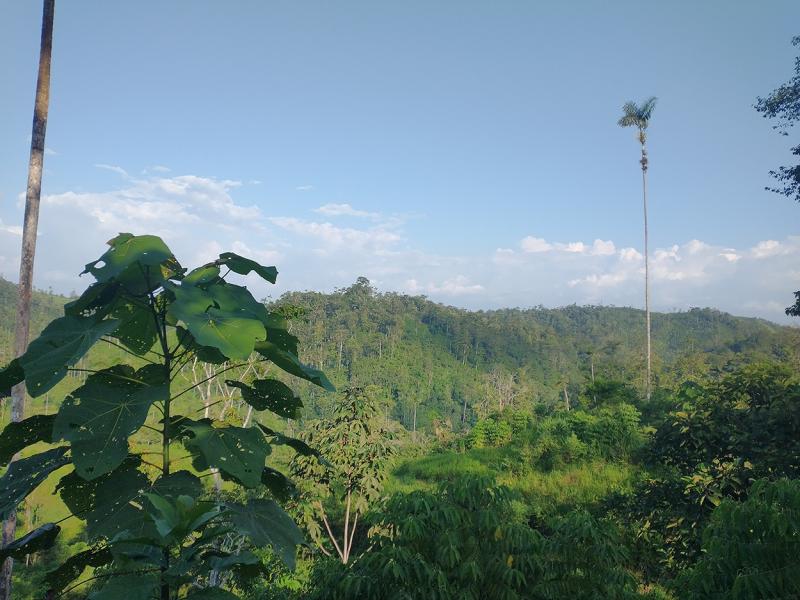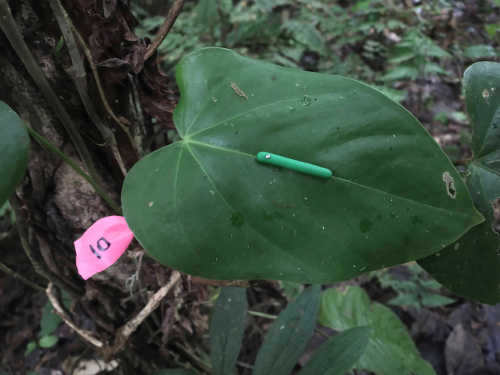TIERA scholar’s project to be featured in classrooms globally
Original story from Tulane University News, written by Molly McCrory mmccrory@tulane.edu and published on August 14, 2024.

Tulane graduate Cece Acosta did not expect her summer spent making clay caterpillars in Ecuador would result in sharing data with millions of biology students around the world, but that is what happened.
Acosta’s research was part of the Tulane Interdisciplinary Environmental Research & Action (TIERA) Program — the result of a relationship between Tulane and Fundación para la Conservación de los Andes Tropicales (FCAT), a nongovernmental organization in Ecuador focused on grassroots research and conversation.
Students in the program participate in a two-week immersive field trip at FCAT over the summer, usually between their sophomore and junior years. They can then choose to focus on a project the next summer and spend the year preparing to participate in a study as a TIERA Scholar.
“It’s really cool to work in a scientific space that’s outside of the U.S. and see people doing conservation who aren’t just people in academia,” said Acosta, who graduated in spring 2024 with degrees in environmental biology and Latin American studies. “It was neat to be in a more intercultural space.”
The forests in Ecuador have been subject to deforestation for decades, and FCAT has been working on reforestation efforts since its inception. Acosta’s study looked at the effectiveness of these reforestation efforts through insect predation rates, or how many creatures try to eat a caterpillar. She looked at places under different levels of reforestation: pastures, areas that have been reforested and areas that have not been subject to deforestation.
Rather than using real caterpillars to track predation, she made fake caterpillars out of non-toxic clay. When predators attempted to eat the clay caterpillars, they left bite marks that Acosta could use to determine their species and number. These predators ranged from birds to mammals to bugs, like ants.
“This method has been used in a lot of different contexts, but it hasn’t been used specifically in the context of reforestation,” said Acosta.

Acosta’s study was picked up by HHMI BioInteractive, a pedagogical biology website for high school and college students. The database includes data from real studies, like Acosta’s, that students can use to learn how biological experiments work and how to analyze data. The data she collected, as well as a video about the study itself, will go on the BioInteractive database to be used in classrooms across the U.S. and many places around the world.
HHMI BioInteractive is not where this study ends, however. Another student, Darbhi Durvasula, is continuing the project this summer. He is a rising senior and TIERA Scholar for the summer of 2024 who is replicating Acosta’s study and adding research into the relative importance of visual and scent cues.
The point of this replication is to apply consistent methods over time to test the effectiveness of these reforestation methods as they progress. “It all tells a story,” Durvasula said.
Both Acosta and Durvasula appreciated the community that comes with being a part of the TIERA program. “A lot of the people I’ve met have gone on to be great mentors or friends of mine,” said Durvasula.
“There’s a lot of opportunity for learning that’s not strictly science, but also just learning how to exist in a space that’s different from your home,” said Acosta. She and Durvasula both talked about playing games and listening to music with FCAT's local resident researchers and other olunteers in the downtime when they weren’t in the field.
“Coming off of a busy semester, especially, just having a month that I’m out there in the field, interacting with the environment, with lots of cool people, it’s really special, honestly,” said Durvasula.
